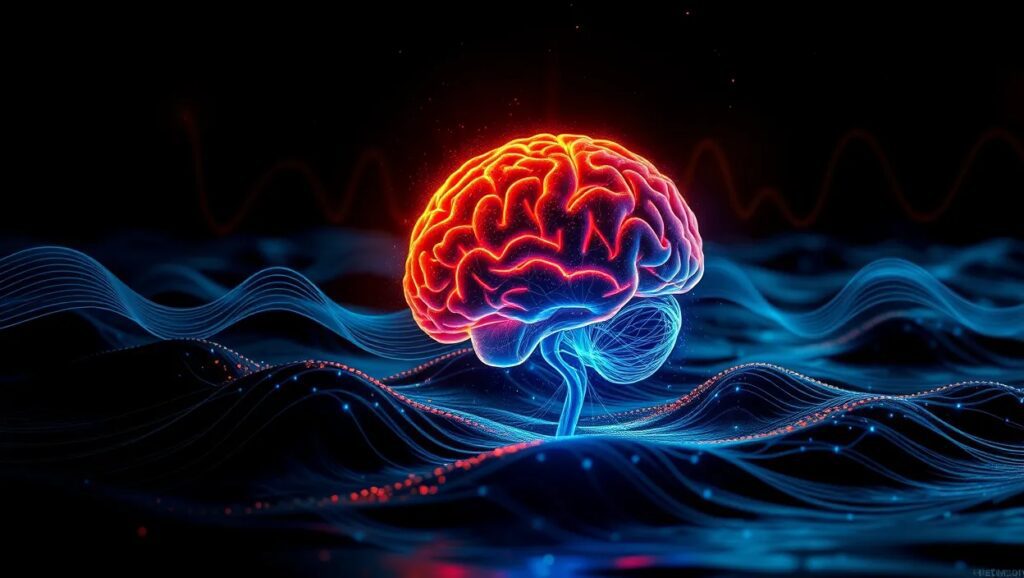
In a fast-paced world, meditation is more essential than ever. But what if the perfect meditation could be tailored specifically for your brainwaves? Thanks to advanced AI-powered apps, this concept is becoming a reality.
By combining neuroscience and technology, these apps promise to revolutionize how we approach relaxation and mindfulness.
How AI Reads and Interprets Brainwaves
The Science Behind Brainwaves
Brainwaves are electrical impulses in your brain that correspond to different states of mind—like focus, relaxation, or stress. Measured in frequencies (Hz), brainwaves are categorized as delta, theta, alpha, beta, and gamma waves.
For instance, delta waves are linked to deep sleep, while theta waves are associated with creativity and relaxation. AI apps leverage EEG (electroencephalogram) devices or wearable sensors to read these patterns.
AI’s Role in Brainwave Analysis
AI algorithms analyze brainwave data in real-time, detecting stress levels, mood, or mental clarity. This data helps the app suggest personalized meditation techniques, such as guided breathing exercises for stress or binaural beats to boost focus.
For example, Muse, an AI-driven headband, interprets brainwave activity and provides feedback, guiding users to stay present during meditation.
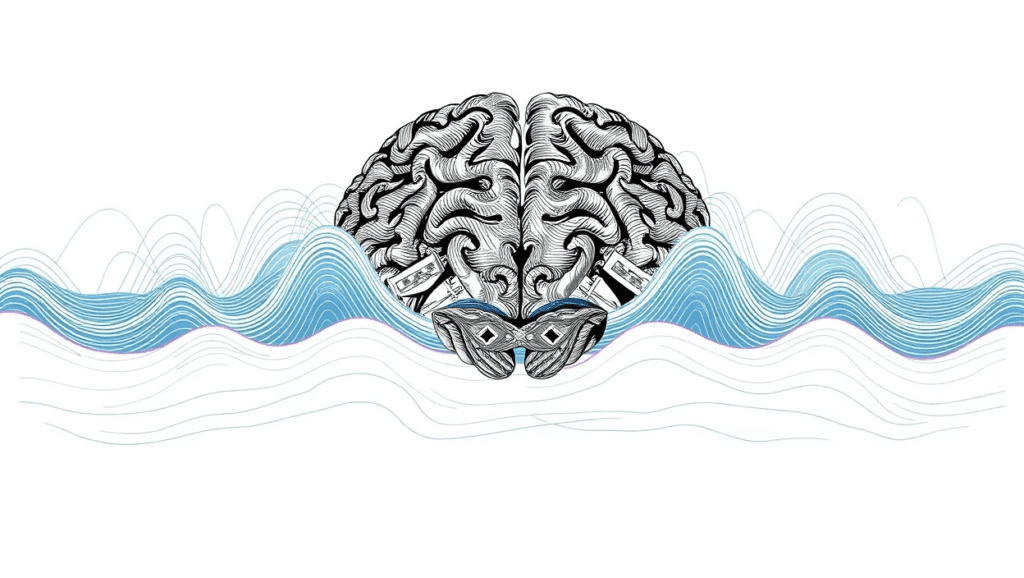
Personalized Meditation Experiences with AI
Tailored Meditation Practices
Traditional meditation programs follow a one-size-fits-all approach. In contrast, AI apps offer sessions designed to align with your current mental state, ensuring more effective outcomes.
For instance, if an app detects heightened beta waves (associated with stress), it might suggest a body scan meditation to calm your nervous system.
Dynamic Adjustments in Real-Time
AI apps don’t stop at suggestions—they adapt as you meditate. If your brainwaves indicate wandering thoughts, the app might prompt you to refocus with a mindful breathing cue or adjust the background music.
Apps like Calm or Insight Timer are exploring AI-driven features to create meditation playlists that evolve based on user behavior.
The Role of Binaural Beats in Brainwave Syncing
What Are Binaural Beats?
Binaural beats are auditory illusions created when two tones of slightly different frequencies are played in each ear. Your brain processes the difference as a third tone, which can influence your brainwaves.
For example, listening to a 10 Hz beat (associated with alpha waves) can promote relaxation and reduce anxiety. AI apps use this technique to synchronize your brainwaves with desired mental states.

AI’s Contribution to Beat Precision
AI ensures that binaural beats are fine-tuned to your specific needs. By analyzing your brainwaves, the app can determine whether you need deeper theta waves for creativity or higher gamma waves for mental clarity.
Brain.fm, for example, combines neuroscience and AI to generate music that enhances focus and relaxation based on brainwave patterns.
How AI Meditation Apps Impact Mental Health
Reducing Stress and Anxiety
AI apps provide an evidence-based approach to managing stress. By offering personalized feedback and targeted techniques, they can reduce cortisol levels and promote a sense of calm.
For instance, an app detecting irregular brainwave activity might guide you through a gratitude meditation to shift focus from stress to positivity.
Enhancing Focus and Creativity
For individuals struggling with distractions, AI-driven meditations can help optimize alpha and theta waves, which are linked to focus and innovative thinking.
Creative professionals often use apps like Flowly, which uses AI to guide users into flow states, enhancing productivity and inspiration.
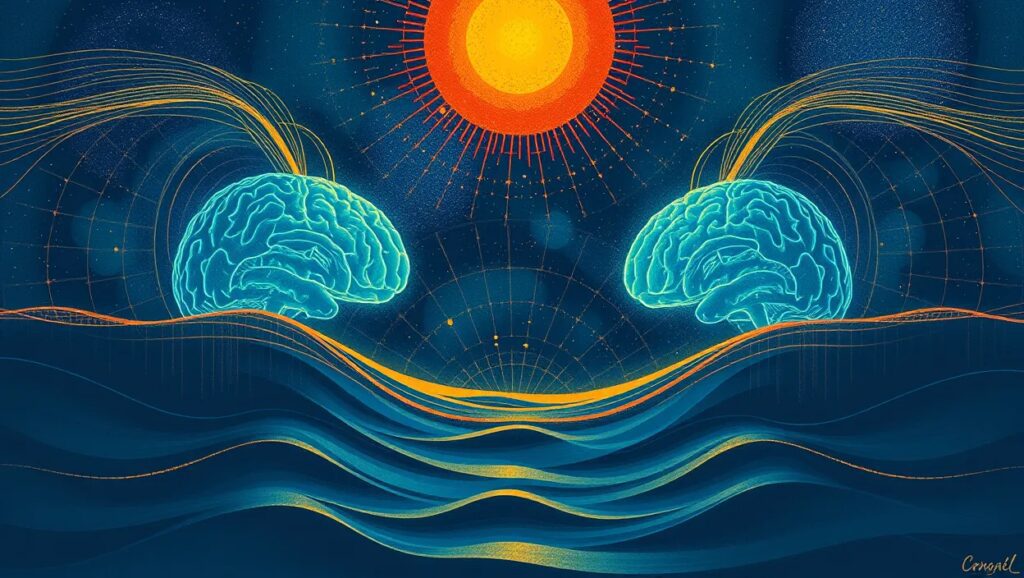
Limitations and Ethical Considerations
Challenges in Brainwave Technology
While promising, brainwave detection isn’t perfect. Variations in sensor accuracy and environmental factors can affect readings, making the data less reliable for some users.
For example, EEG headbands may not provide precise results if worn incorrectly or in noisy environments. Developers are working to improve hardware and algorithms for consistency.
Ethical Concerns and Data Privacy
AI apps collect sensitive data about your mental state. Protecting this data is critical to ensuring user trust. Companies must prioritize transparent policies and robust security measures.
Apps like NeuroMeditation explicitly outline how user data is stored and used, setting a benchmark for ethical AI practices in meditation.
Benefits of AI-Driven Meditation for Specific Groups
Professionals Battling Workplace Stress
High-pressure environments can lead to chronic stress and burnout. AI meditation apps help professionals manage stress by offering tailored relaxation exercises that fit into their busy schedules.
For instance, an app like Mindshine might detect heightened beta brainwaves (associated with stress) after a workday and recommend a 10-minute progressive muscle relaxation exercise to unwind.
- Example: A marketing executive feeling overwhelmed during a deadline crunch could use an AI app to access calming binaural beats, resetting their focus.
Students and Learners Struggling with Focus
AI meditation apps are invaluable for students dealing with distractions or exam stress. By boosting alpha brainwaves, these apps help enhance concentration and retain information.
For instance, apps like Flowly or Brain.fm offer sessions that synchronize brainwaves for optimal focus during study sessions. Some even integrate Pomodoro-style breaks for maintaining productivity.
- Example: A college student preparing for finals might use the app to trigger theta waves, enhancing creativity for tackling essay topics.
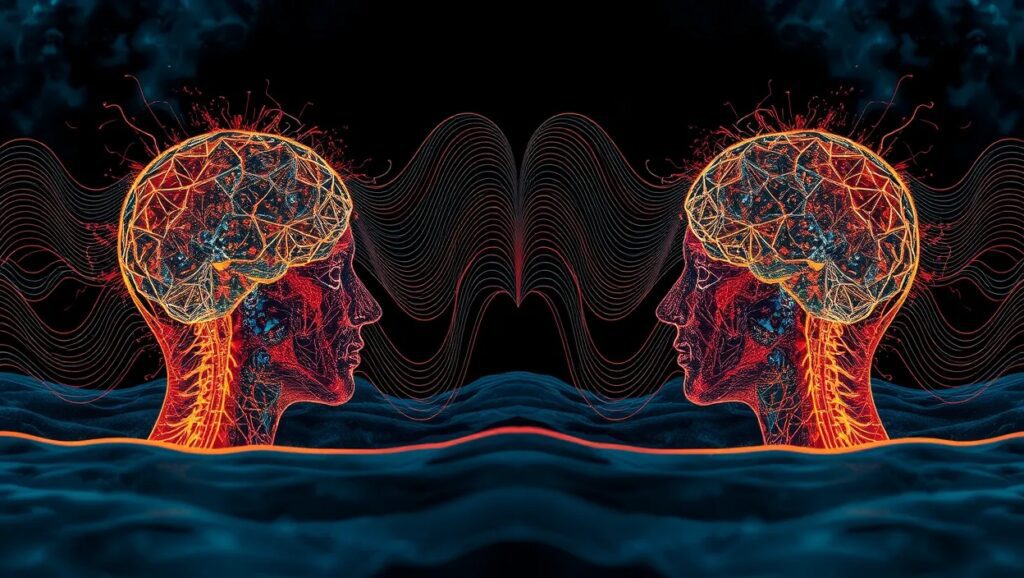
Seniors Looking for Cognitive Support
For seniors, meditation can improve memory retention and mental clarity. AI meditation apps cater to this demographic by targeting brainwaves associated with relaxation and focus, which often decline with age.
Apps like Myndlift offer neurofeedback-based meditations, helping seniors maintain sharpness and reduce anxiety related to cognitive decline.
- Example: A retiree feeling forgetful could use an AI app to guide them through brainwave-enhancing meditations that stimulate gamma activity for better recall.
Individuals with Anxiety Disorders
AI meditation apps provide personalized techniques for calming overactive beta brainwaves, which are often associated with anxiety. By offering real-time adjustments, these apps ensure a supportive experience.
Apps like Wysa combine AI meditation with mental health coaching, guiding users to regulate breathing and shift to a calmer state of mind.
- Example: Someone experiencing a panic attack might receive immediate prompts for a grounding exercise tailored to their specific stress signals.
Athletes and Fitness Enthusiasts Seeking Recovery
Recovery is a critical part of any fitness regimen, and meditation plays a key role. AI-driven meditations can help athletes enhance delta brainwaves for deep sleep and theta waves for faster recovery.
Apps like Muse or Headspace Sport offer targeted meditations designed to reduce muscle tension and improve sleep cycles, accelerating post-workout recovery.
- Example: A marathon runner experiencing post-race fatigue could use an AI app to guide them through a body-scan meditation, promoting muscle relaxation and rest.
Creative Professionals Needing Inspiration
For creatives like writers, designers, and artists, AI apps can stimulate theta waves linked to creative flow and problem-solving. This brainwave synchronization often leads to breakthroughs and fresh ideas.
Brain.fm and similar platforms offer tailored soundscapes that align brain activity for creativity-enhancing states.
- Example: A graphic designer stuck on a project might use an AI app to foster creative brainstorming with music that promotes theta wave activity.
Benefits of AI-Driven Meditation for Children
Supporting Emotional Regulation
Children often struggle with identifying and managing their emotions. AI meditation apps provide tools like guided breathing exercises and storytelling meditations to help kids calm down and build emotional resilience.
For example, apps like Moshi use AI to create personalized bedtime meditations that adjust based on a child’s mood, helping them transition from active play to restful sleep.
- Example: A child feeling overwhelmed after school could use an app to guide them through a “calm cloud” exercise, helping them breathe away their worries.
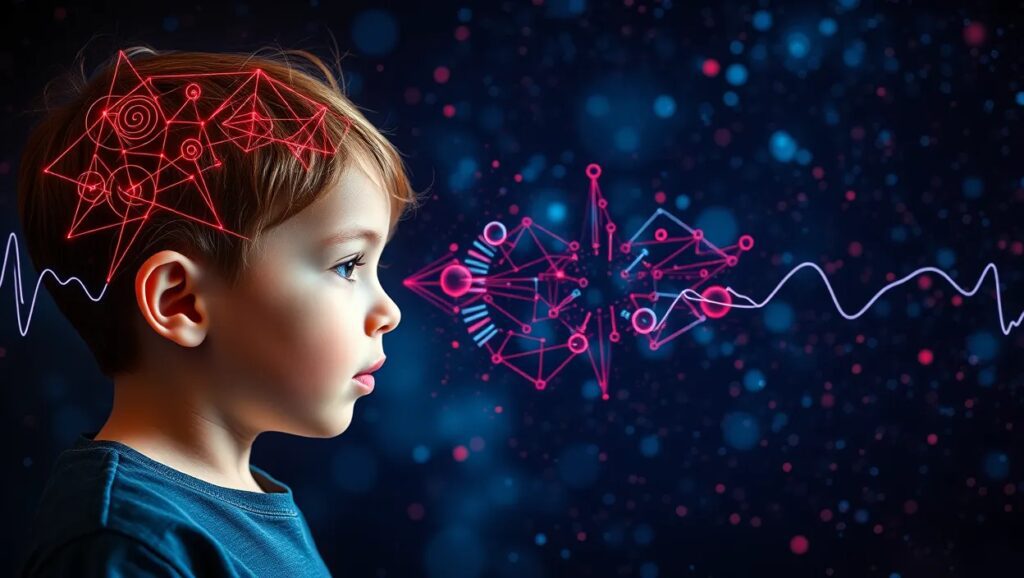
Enhancing Focus and Attention
For children, especially those with ADHD, staying focused on tasks can be challenging. AI apps designed for young users can boost alpha brainwaves for attention and calm, helping kids stay on track during homework or classroom activities.
Apps like Mightier integrate AI and neurofeedback games, teaching kids focus and self-regulation through fun, interactive methods.
- Example: A child distracted during study time might use an app that encourages focus through gamified breathing challenges or calm-inducing soundscapes.
Promoting Better Sleep
Sleep is essential for growing minds, but children often struggle with restlessness at bedtime. AI meditation apps analyze patterns in their behavior or mood to create personalized bedtime stories or relaxing soundscapes that promote delta waves for deep sleep.
For instance, an app like Moshi tailors content to lull children into sleep by combining calming visuals and sound effects.
- Example: A restless child who struggles with nightmares might use an app that plays soothing rain sounds combined with a guided “safe space” meditation.
Building Mindfulness Skills Early
Teaching mindfulness early equips children with tools to handle stress, anxiety, and social challenges as they grow. AI apps make mindfulness accessible with engaging, age-appropriate content like animated characters or gamified exercises.
Apps like Smiling Mind offer kid-friendly meditations that focus on gratitude, kindness, or grounding techniques. These practices foster self-awareness and empathy in children.
- Example: A shy child navigating social challenges at school might use an app’s “confidence booster” meditation to visualize positive interactions.
Supporting Children with Special Needs
AI meditation apps can be particularly helpful for children with autism or sensory processing disorders. These tools adjust stimuli—like sound, visuals, or pacing—based on the child’s needs, ensuring a soothing and safe experience.
Apps like Inner Explorer, designed for children of all abilities, help them build focus and reduce anxiety in an inclusive, adaptive way.
- Example: A child with autism feeling overstimulated might use an app that transitions them into a calming state with soft, repetitive music and simple guided cues.
Encouraging Parent-Child Bonding
Many AI meditation apps encourage co-use by parents and children, making mindfulness a shared experience. This not only strengthens bonds but also models healthy habits for kids to adopt.
For instance, an app might include family meditations, such as a gratitude circle or a shared breathing practice, tailored to promote relaxation for both parents and kids.
- Example: After a busy day, a family could gather for a five-minute “rainbow breath” meditation, guided by an AI app, to decompress together.
Specific Features of AI-Driven Meditation Apps for Children
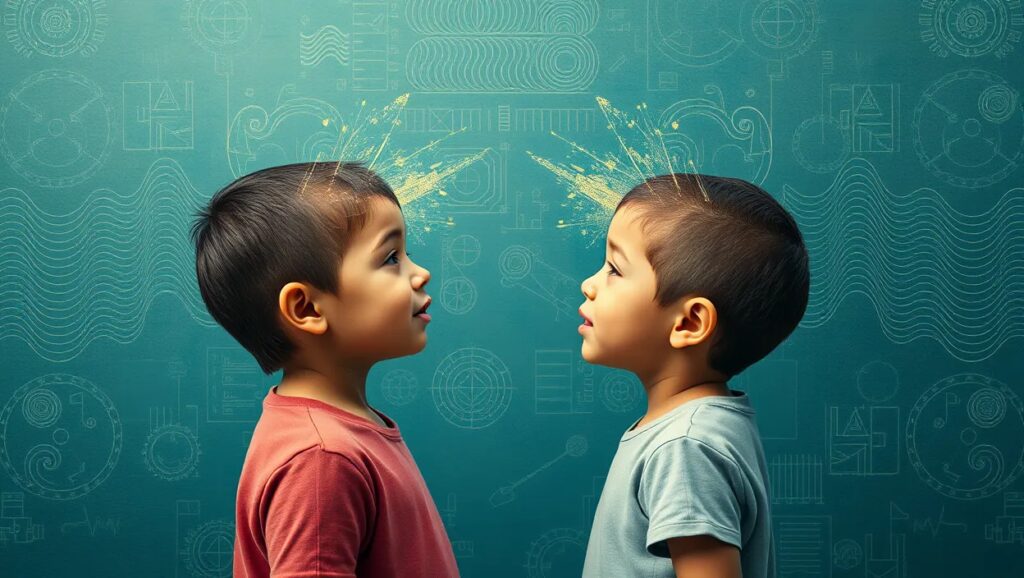
Personalized Content Based on Mood or Behavior
AI-powered apps often include features that adapt to a child’s emotional state in real time. By analyzing input from parents, or even wearable devices, the app suggests customized meditations or activities to help the child manage their current feelings.
- Example: An app detects that a child is restless or hyperactive and offers a short, interactive body-scan meditation to calm them before bed.
Apps like Moshi use daily mood check-ins to tailor bedtime meditations or calming stories for each child.
Gamification of Mindfulness Practices
Many AI meditation apps for children incorporate gamification to make mindfulness engaging. They offer points, badges, or fun challenges for completing exercises like deep breathing or visualization techniques.
- Example: An app rewards a child with a digital sticker for practicing five minutes of belly breathing, encouraging consistent use.
Apps like Mightier combine neurofeedback and gameplay, helping kids develop focus and emotional control through fun activities.
Guided Visualization and Storytelling
Story-driven meditations are a key feature of children’s AI meditation apps. These stories often integrate calming imagery and characters that guide kids through relaxation exercises while keeping their attention.
- Example: A guided story about “floating on a magic cloud” might lead a child through visualization techniques that reduce anxiety and promote calm.
Apps like Smiling Mind and Calm Kids offer bedtime stories designed to align with brainwave states conducive to sleep and relaxation.
Kid-Friendly Interfaces and Visual Cues
The interface is crucial in engaging young users. These apps often feature bright, inviting visuals, playful animations, and intuitive navigation to ensure kids can interact independently or with minimal help.
- Example: A meditation app uses animated characters to demonstrate belly breathing, making it easier for children to mimic and follow along.
Real-Time Neurofeedback Integration
Some advanced apps include neurofeedback technology that tracks a child’s brainwave activity via wearable sensors. This data allows the app to adjust meditation cues in real-time, enhancing effectiveness.
- Example: If a child becomes distracted during meditation, the app might prompt them with a calming sound or suggest focusing on their breath.
Apps like Muse and Myndlift specialize in combining neurofeedback with tailored meditation guidance for kids and adults alike.

Soothing Soundscapes and Binaural Beats
AI meditation apps often include customizable soundscapes that align with children’s preferences. Options may range from nature sounds to lullabies, with binaural beats to sync brainwave activity for calm or focus.
- Example: A child struggling with focus during homework might listen to binaural beats designed to promote alpha waves, enhancing concentration.
Apps like Brain.fm and Moshi feature soundtracks that evolve based on user feedback, ensuring an engaging and soothing experience.
Parent Monitoring and Involvement Tools
AI apps for children often include parent dashboards to track progress and offer insights into how their child’s mood, focus, or sleep is improving over time.
- Example: A parent might receive a notification that their child completed three meditations this week and spent 20% less time feeling restless before bedtime.
Apps like Inner Explorer allow parents to co-meditate with their children, fostering mindfulness as a shared family activity.
Customizable Meditation Duration and Themes
AI meditation apps allow parents to set session lengths or choose specific themes—like relaxation, confidence, or focus—depending on the child’s needs.
- Example: A parent can select a three-minute “Calm Down Quick” session after school or a 10-minute “Relax for Sleep” meditation at bedtime.
Apps like Insight Timer for Kids and Headspace for Kids offer flexible options to fit into any routine.
Everyday Scenarios Using AI Meditation App Features for Children
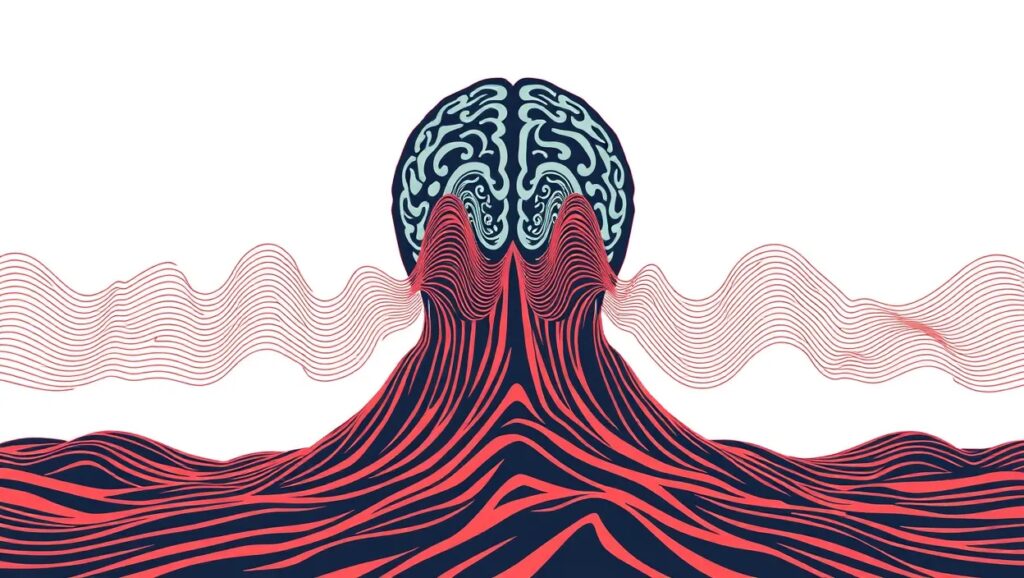
Morning Focus Boost
Scenario: Your child has trouble waking up and focusing on schoolwork during busy mornings.
Feature in Action: A parent opens the meditation app and selects a three-minute “Morning Focus” session. The app uses soothing animations and breathing exercises guided by an AI mascot to help the child wake up gently and set a positive tone for the day.
- The app might use alpha wave soundscapes to calm lingering sleepiness while promoting alertness, preparing the child for their day.
Example App: Insight Timer for Kids offers short, themed meditations like “Start the Day with Gratitude” or “Focus Like a Superhero.”
Managing a Post-School Meltdown
Scenario: After a long school day, your child is irritable and overwhelmed.
Feature in Action: The app suggests a “Cool Down Quick” session based on the child’s mood. It uses interactive, gamified breathing exercises where the child “blows out” a digital candle or creates ripples on a virtual pond by breathing slowly.
- As the child’s tension decreases, the app tracks their progress and praises their effort with a fun sticker reward.
Example App: Mightier gamifies emotional regulation exercises with activities like guiding a dragon to breathe fire calmly, turning frustration into fun.
Overcoming Bedtime Restlessness
Scenario: Your child is having trouble winding down before bed and keeps getting up.
Feature in Action: The app reads the child’s earlier input about their day (e.g., high activity level) and recommends a customized bedtime story meditation. The story features calming narration and soundscapes, gradually syncing with the child’s brainwaves to promote delta wave activity for deep sleep.
- The narration might guide the child to “float on a soft cloud” while emphasizing slow, rhythmic breathing.
Example App: Moshi offers adaptive bedtime stories like “Sleepy Paws the Koala” paired with calming music tailored to the child’s restlessness level.
Homework Concentration Boost
Scenario: Your child has difficulty focusing during homework time and gets easily distracted.
Feature in Action: The app detects that the child’s mood suggests fatigue or low attention and activates a binaural beat soundscape to stimulate alpha brainwaves. The child listens while completing math problems, helping them stay relaxed yet alert.
- The app might also provide periodic reminders, like “Take a deep breath, and let’s stay focused!” to gently nudge the child back on track.
Example App: Brain.fm offers tailored soundtracks for focus, specifically designed to create an environment conducive to productivity.
Calming Pre-Test Nerves
Scenario: Your child feels anxious before a big test at school and struggles to stay calm.
Feature in Action: The app offers a short, guided visualization exercise where the child imagines stepping into a “confidence bubble.” Soothing animations help the child visualize success, while slow breathing cues calm their heart rate and beta wave activity.
- The app provides positive affirmations like, “You’re prepared and ready to do your best,” boosting the child’s self-esteem.
Example App: Calm Kids features guided meditations for stress and confidence-building that are short enough to fit into a morning routine.
Relaxation During Overstimulation
Scenario: Your child becomes overstimulated in a noisy environment, like a crowded family gathering or a birthday party.
Feature in Action: With wearable sensors (optional), the app detects heightened stress levels and activates a “Quick Calm” mode. Using a soothing visual cue—like watching waves roll in on a virtual beach—it guides the child through progressive muscle relaxation.
- The app’s neurofeedback ensures the session adapts in real-time, slowing down if the child needs extra moments to calm.
Example App: Muse or Myndlift offers neurofeedback-integrated sessions to guide children back to a balanced state.
Parent-Child Bonding During Meditation
Scenario: You want to introduce mindfulness to your child in a way you can share as a family.
Feature in Action: The app offers a family meditation session, like a gratitude circle. Each family member shares one thing they’re thankful for while following a guided breathing rhythm.
- Interactive elements, like visualizing a “family gratitude tree,” help kids engage while reinforcing mindfulness practices.
Example App: Inner Explorer has family-centered meditations that promote bonding while building emotional resilience.
Key Takeaway
AI-powered meditation apps for children are revolutionizing mindfulness by combining neuroscience, gamification, and real-time personalization. These apps cater to everyday challenges—like focus, stress, and sleep—through customized experiences tailored to each child’s needs.
By engaging young minds with interactive visuals, gamified rewards, and adaptive techniques, these tools help children build emotional regulation and mindfulness skills that will benefit them for life. Whether managing bedtime restlessness or boosting pre-test confidence, AI-driven meditation ensures that mindfulness is not only accessible but also enjoyable for kids and families alike.
FAQs
How do AI meditation apps detect my child’s mood or stress level?
AI meditation apps often use parental inputs, in-app behavior, or optional wearable devices like EEG headbands to gauge your child’s emotional state.
For example, if the app notices frequent pauses during a calming activity, it might suggest shorter, more engaging exercises to retain your child’s focus.
Can these apps really help children with ADHD?
Yes, many AI apps are specifically designed to assist children with ADHD by improving focus and emotional regulation. They use techniques like binaural beats to synchronize brainwaves for calmness and guided exercises to manage restlessness.
For instance, an app might guide a child through a “superpower breathing” game where they imagine blowing up a balloon to practice deep breathing.
Are AI meditation apps safe for children to use independently?
Most apps are designed with child-safe interfaces and minimal reading requirements, ensuring ease of use. Parents can often set permissions, monitor progress, or co-use the app for added safety.
For example, apps like Moshi allow parents to preview meditation content and adjust session lengths to match their child’s needs.
What’s the ideal age for children to start using these apps?
Children as young as 3 can benefit from simple mindfulness exercises like guided breathing or bedtime meditations. Older kids can engage with more structured activities like focus-building or stress-relief practices.
For instance, a preschooler might enjoy a story about a calming animal adventure, while a 10-year-old could try a focus-boosting soundscape for homework.
Can AI meditation apps replace traditional bedtime routines?
AI apps are not meant to replace bedtime routines but to enhance them. They integrate soothing music, guided meditations, and storytelling to help children wind down and sleep more soundly.
For example, pairing a bedtime story from an app like Moshi with a parent reading alongside creates a hybrid routine that combines technology with personal connection.
How do these apps handle overstimulated or anxious children?
AI meditation apps adapt sessions based on a child’s behavior or mood, offering short, calming exercises or interactive stories to soothe overstimulation.
For instance, a child overwhelmed after a noisy party could use an app to follow a “cooling breeze” visualization that combines slow breathing with relaxing sound effects.
Do these apps work for children with sensory sensitivities?
Yes, many apps are designed to be inclusive of children with sensory sensitivities. They allow adjustments in volume, pacing, or visual intensity to ensure a comfortable experience.
For example, an app might offer a gentle mode that uses soft colors and slower narration for children who find bright visuals or fast pacing overwhelming.
Can parents track their child’s progress?
Yes, many apps provide parent dashboards that show how often your child uses the app, their favorite activities, and areas where they’re improving (like focus or sleep).
For example, a parent might see that their child completed three focus meditations during the week and earned rewards for staying calm after school.
Are AI meditation apps effective for group use?
AI meditation apps often include group activities that can be used in classrooms or family settings. They feature exercises like shared gratitude or synchronized breathing to foster a sense of connection.
For instance, a teacher could use an app’s guided mindfulness exercise to calm an entire classroom after recess, creating a collective moment of focus.
How do AI meditation apps adapt sessions for younger children?
AI meditation apps for younger children often use storytelling, animations, and interactive games to simplify complex mindfulness concepts. These elements keep younger users engaged while teaching them to manage emotions and build focus.
For example, a three-minute story might guide a child to imagine blowing bubbles into the sky, practicing deep breathing in a playful way.
Can AI apps help children develop mindfulness habits over time?
Yes, AI apps are excellent for building consistent mindfulness habits through daily reminders, streak tracking, and rewards systems. These features motivate children to return regularly and integrate mindfulness into their routine.
For instance, an app might encourage a child to complete a five-day streak with a reward like unlocking a new meditation theme or a digital badge.
Are there apps specifically designed for neurodiverse children?
Yes, several AI meditation apps cater to neurodiverse children by offering customizable experiences that adapt to individual needs. Features like slow-paced narration, calming visuals, and reduced stimuli make these apps ideal for kids with autism or sensory processing challenges.
For example, an app might allow a child to choose between soft ambient music or no background sound, ensuring their sensory comfort during a meditation session.
Can these apps help siblings with different needs?
AI apps often include multiple profiles and customization options, making them suitable for families with children who have different mindfulness needs.
For instance, one sibling could choose a focus-building exercise for homework, while another opts for a calming bedtime meditation—all within the same app.
Do these apps offer offline features for travel or device-free zones?
Many AI meditation apps allow users to download sessions, ensuring accessibility during travel or when Wi-Fi isn’t available. This is particularly helpful for maintaining routines during vacations or long trips.
For example, parents can download bedtime meditations so children can relax and sleep while traveling.
How do these apps encourage emotional expression?
AI apps promote emotional expression by integrating activities like journaling prompts, gratitude exercises, or expressive breathing techniques. These help children articulate feelings and process emotions constructively.
For instance, an app might prompt a child to “share one thing that made them smile today” before starting a meditation, reinforcing positive reflection.
Can these apps be integrated into school or daycare settings?
Yes, many AI meditation apps are designed for group use in classrooms or daycare centers, offering short, structured mindfulness sessions that fit into daily schedules. Teachers can use them for calming transitions, like after recess or before tests.
For example, a teacher might play a calming visualization exercise for the class, encouraging students to imagine themselves in a peaceful garden.
Are the benefits of AI-guided meditation scientifically supported?
Research supports the use of guided meditation and mindfulness practices for reducing stress, improving focus, and fostering emotional regulation in children. AI apps enhance these benefits by personalizing the experience, making mindfulness more engaging and effective.
For instance, studies show that tailored mindfulness activities, like those in AI apps, are especially helpful for children with ADHD or high levels of anxiety.
How do these apps ensure privacy and data security?
Reputable AI meditation apps for children prioritize data security and compliance with privacy laws like COPPA (Children’s Online Privacy Protection Act). They provide transparency about how data is collected, stored, and used.
For example, an app might store only anonymized session data and give parents full control over their child’s account settings.
Resources
Top AI Meditation Apps for Children
- Moshi: A kid-friendly app offering bedtime stories, relaxing soundscapes, and mindfulness exercises tailored to children’s emotional needs. Visit moshi.com.
- Smiling Mind: A free mindfulness app designed for kids and families, featuring meditations for focus, gratitude, and emotional regulation. Explore at smilingmind.com.au.
- Mightier: Combines neurofeedback with gamified emotional regulation tools to help children manage stress and develop focus. Learn more at mightier.com.
- Calm Kids: A version of the popular Calm app focused on children, offering guided meditations, sleep stories, and breathing exercises. Check it out at calm.com/kids.
- Inner Explorer: Designed for schools and families, this app provides structured mindfulness programs for emotional resilience and focus. Visit innerexplorer.org.
Wearable Devices for Enhanced Meditation
- Muse Headband: Tracks brainwave activity and provides real-time neurofeedback to guide meditative states. Ideal for older children or teens. More at choosemuse.com.
- Flowly: A wearable device paired with an app that guides users through relaxation exercises using heart rate and breathing feedback. Visit flowly.world.
Books on Mindfulness for Kids
- “Sitting Still Like a Frog” by Eline Snel: A practical guide for introducing mindfulness to children, with accompanying exercises and audio resources.
- “Breath Like a Bear” by Kira Willey: Features short, engaging mindfulness activities for kids, perfect for schools or bedtime routines.
Research and Scientific Insights
- Mindfulness Research at UC Berkeley: Learn about how mindfulness benefits children through studies and resources. Visit greatergood.berkeley.edu.
- Child Mind Institute: Offers insights into mindfulness and its impact on children’s mental health and focus. Visit childmind.org.
Tools for Educators and Parents
- GoNoodle: Provides mindfulness and movement videos for kids, perfect for classrooms or at-home breaks. Explore at gonoodle.com.
- Cosmic Kids Yoga: Combines mindfulness with yoga exercises and guided relaxation for young learners. Visit cosmickids.com.